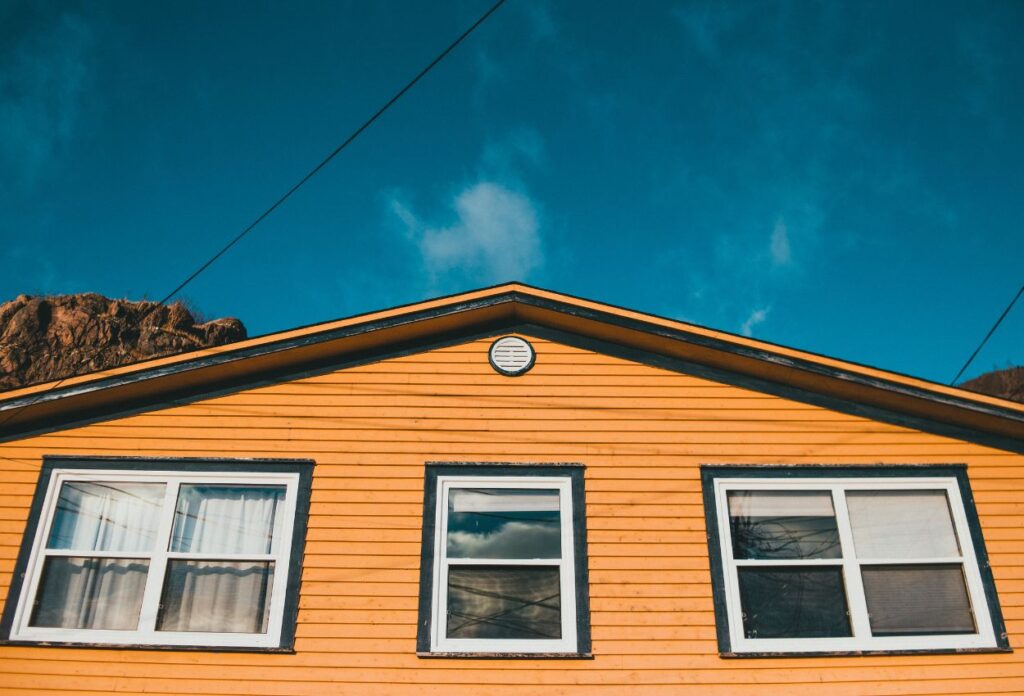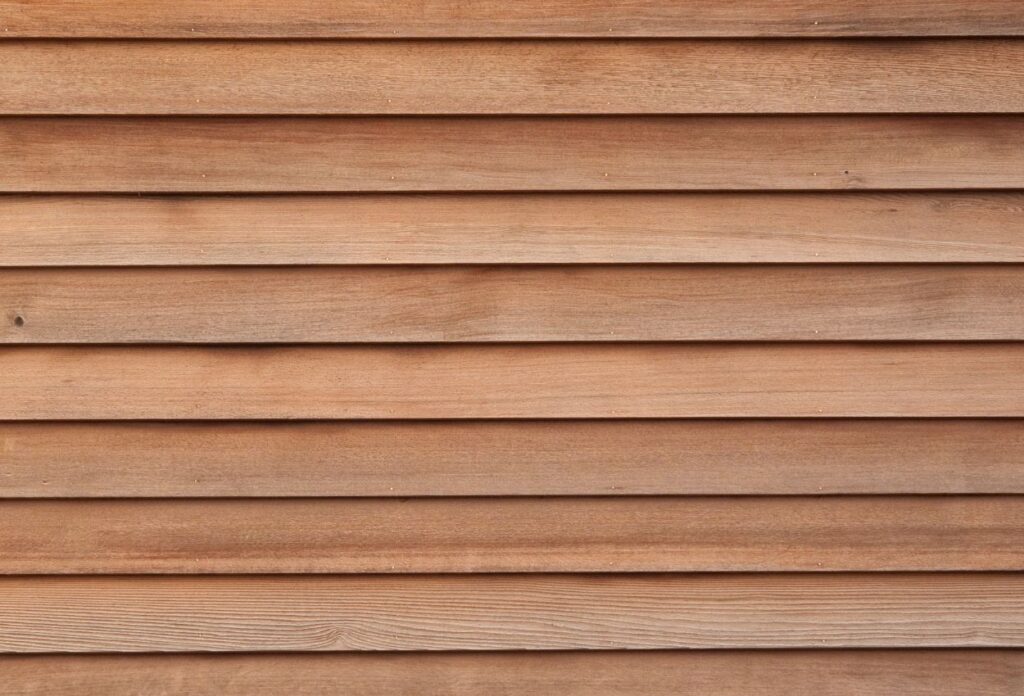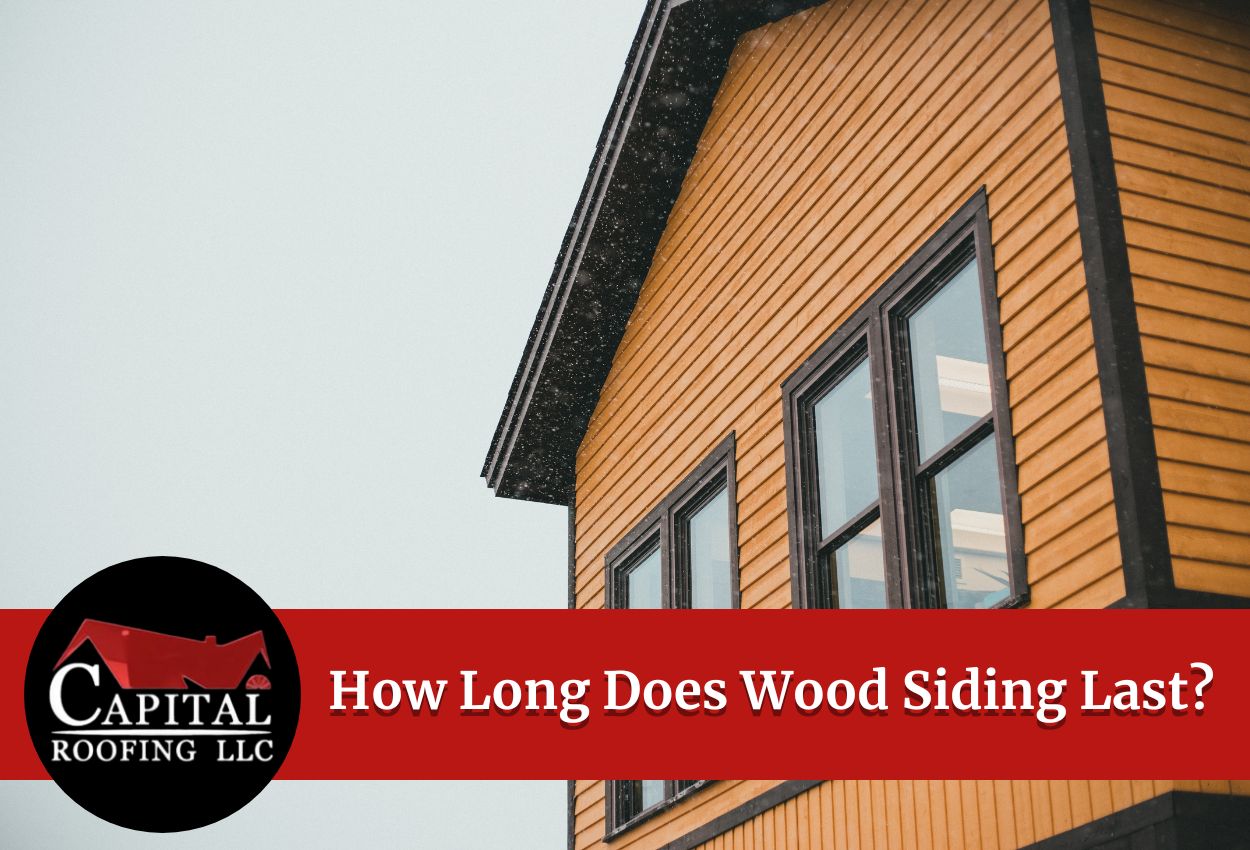We all know that siding plays a major role in the appearance of your home’s exterior and that there are various siding materials you can choose from.
One popular siding material option for residential buildings is wood siding. But many homeowners face a common concern: how long does wood siding last?
Generally, the lifespan of wood siding is between 20 and 40 years. However, the exact lifespan of wood siding for your property depends on many things.
At Capital Roofing, we are your trusted local home contractors serving Claremore and the nearby regions in Oklahoma.
In this article, we will go over everything you should know about the lifespan of wood siding. After reading this quick guide, you will have a better idea of how long wood siding will last on your home.
Feel free to call us today at (918) 260-4075 to discuss your siding or roofing project with our professionals.
What Are The Factors That Affect The Lifespan Of Wood Siding?

As we mentioned above, wood siding will generally last for 20 to 40 years, but there are some factors that affect the exact lifespan of wood siding on your home. Here we will have a closer look at each of those factors.
#1 Wood Type
The type of wood you choose for your home’s exterior siding has a significant impact on its overall lifespan. Different wood siding types offer varying durability:
👉 Pine siding generally lasts around 20 to 25 years.
👉 Fir siding can last 30 years with proper care.
👉 Cedar siding generally lasts for 25 to 40 years.
👉 Redwood siding can reach over 75 years with the right maintenance.
👉 Cypress siding is the longest-lasting wood siding option. This siding can last for around 100 years.
👉 Exotic hardwood siding options like ipe and cumaru can last 50 to 75 years.
When you are choosing a wood house siding, consider how the natural properties of each wood species affect its resistance to moisture, insects, and decay.
Cedar and redwood siding contain natural oils that make them more resistant to rot and insect damage, while pine requires more intensive treatment and maintenance.
#2 Installation Quality
The lifespan of wood siding heavily depends on installation. When outside siding is installed correctly, it creates a tight barrier against the outdoor elements.
Poor installation of wood siding panels can result in gaps, improper overlap, or inadequate sealing that allows moisture to penetrate behind the siding.
Make sure your contractor follows manufacturer guidelines, uses appropriate fasteners, and leaves proper spacing for wood expansion and contraction.
Flashing around the windows, doors, and other openings is very important to prevent water intrusion that can lower your wood siding’s lifespan.
#3 Local Climate Conditions
Your local climate is another factor that affects how long wood siding will last. Homes in mild, dry climates may see their wood siding last much longer than the average lifespan, while those in harsh environments may need replacement sooner.
Excessive moisture, freezing temperatures, high humidity, and intense sun exposure can all accelerate wood deterioration.
If you live in a region with extreme weather conditions, you may also need more frequent care to maintain your wood siding’s appearance and integrity.
#4 Maintenance Routine
Regular maintenance is one of the most important things that determines the lifespan wood siding will achieve. Without proper care, even the most durable types of wood siding will deteriorate rapidly.
Your maintenance routine should include regular cleaning, inspection for damage, immediate repairs, and reapplication of protective finishes.
#5 Finish Quality and Reapplication
The quality of paint, stain, or sealant applied to your wood siding affects its durability. High-quality finishes provide better protection against moisture, UV rays, and insect damage.
Most wood siding requires refinishing every three to seven years, based on your local climate and the quality of the previous application.
#6 Proximity to Vegetation
Trees and shrubs close to your home can affect your wood siding’s lifespan. While they may provide shade that protects siding from UV damage, they can also create moist conditions that promote rot and fungal growth.
Additionally, branches that rub against siding can damage protective finishes and create entry points for moisture. Trim vegetation away from your home’s exterior to maintain your wood siding’s lifespan.
How to Maintain the Lifespan of Wood Siding

As homeowners, you want your siding to last as long as possible. And if you take good care of your siding (or of any part of your property), it will last up to its expected lifespan.
Wood siding needs a thorough upkeep routine to make sure it lasts beyond its average lifespan. Here we will share how you can maintain the lifespan of your wood siding.
#1 Regular Cleaning
Clean your wood siding at least once or twice a year to remove dirt, mold, and mildew that can trap moisture and cause decay. Use a simple, soft-bristled brush and a mild detergent solution, avoiding pressure washers that can damage wood fibers and force water behind the siding.
Pay special attention to areas that don’t receive much sunlight, as these locations are more prone to mold growth that can significantly reduce the wood siding’s lifespan if left untreated.
#2 Prompt Repairs
Addressing small problems before they become serious concerns is very important for maintaining wood siding. Inspect your siding regularly for cracked or loose boards, warping, or signs of rot.
Replace damaged sections promptly rather than waiting for the problem to spread. This attentive approach to maintenance can extend your wood siding’s overall lifespan.
#3 Regular Refinishing
Reapply paint, stain, or sealant according to manufacturer recommendations, typically every few years, depending on your climate and siding colors. This protective layer is essential for preventing moisture penetration that leads to rot.
Before refinishing, make sure to prepare the surface by cleaning and lightly sanding. This ensures proper adhesion and maximizes the lifespan of your protective coating, which directly impacts your wood siding’s durability.
#4 Proper Moisture Management
Make sure your home has a complete drainage system, including gutters and downspouts, to direct water away from your wood siding. Water pooling near your foundation or splashing onto siding can reduce its lifespan.
Check that your home’s interior humidity levels are controlled, as excess moisture from inside can migrate through walls and damage siding from behind, especially in colder climates where condensation is more likely to occur.
#5 Insect Prevention
Treat your wood siding with appropriate insect repellents if you live in an area prone to termites or other wood-boring insects. Regular inspections for insect activity can help catch problems early before they compromise your siding’s integrity.
Natural wood siding options like cedar provide some insect resistance, but even these materials benefit from preventative treatments in high-risk areas.
Also Read: Different Types Of Siding Materials?
BONUS
What Are The Signs You Need Wood Siding Replacement?
Another important thing you should know about is the signs it’s time to replace your wooden siding. Knowing these signs allows you to take immediate measures to prevent damage to other components of your home.
#1 Warping or Buckling
When your wood siding panels begin to warp or buckle, it indicates that moisture has penetrated deep into the wood. This compromises the structural integrity and protective function of your wood siding.
#2 Rot or Decay
Soft, crumbling, or discolored areas on your wood house siding signal rot has set in, and affected sections will need immediate replacement to prevent spread.
#3 Frequent Paint Failure
If your siding colors fade quickly or you’re repainting much more often than the expected interval, your wood may be losing its ability to hold a finish.
#4 Cracks or Splits
Deep cracks that penetrate through the paint into the wood itself allow moisture entry and significantly reduce your wood siding’s lifespan.
#5 Interior Moisture Problems
Water stains, mold, or peeling wallpaper on interior walls may indicate that your wood siding exterior has failed to keep moisture out of your home.
#6 High Energy Bills
A sudden rise in your heating or cooling bills could mean that your wood siding no longer provides adequate insulation due to deterioration.
#7 Visible Mold or Mildew
Persistent mold growth on your wood shake siding that returns despite cleaning indicates moisture problems that may require siding replacement.
Get Professional Siding Services In Oklahoma
At Capital Roofing, we are your trusted siding professionals. We are committed to providing high-quality siding services in Claremore and the surrounding areas of Oklahoma. Whether you want wooden siding or any other material, our team can do it all for you.
Our team can help you choose the best siding material for your property. We understand the importance of proper installation in home improvement projects whether siding, roofing, or gutters. We follow the right installation practices so your new siding lasts beyond its expected lifespan.
For a free, no-obligation consultation with our professionals, feel free to call us today at (918) 260-4075.

